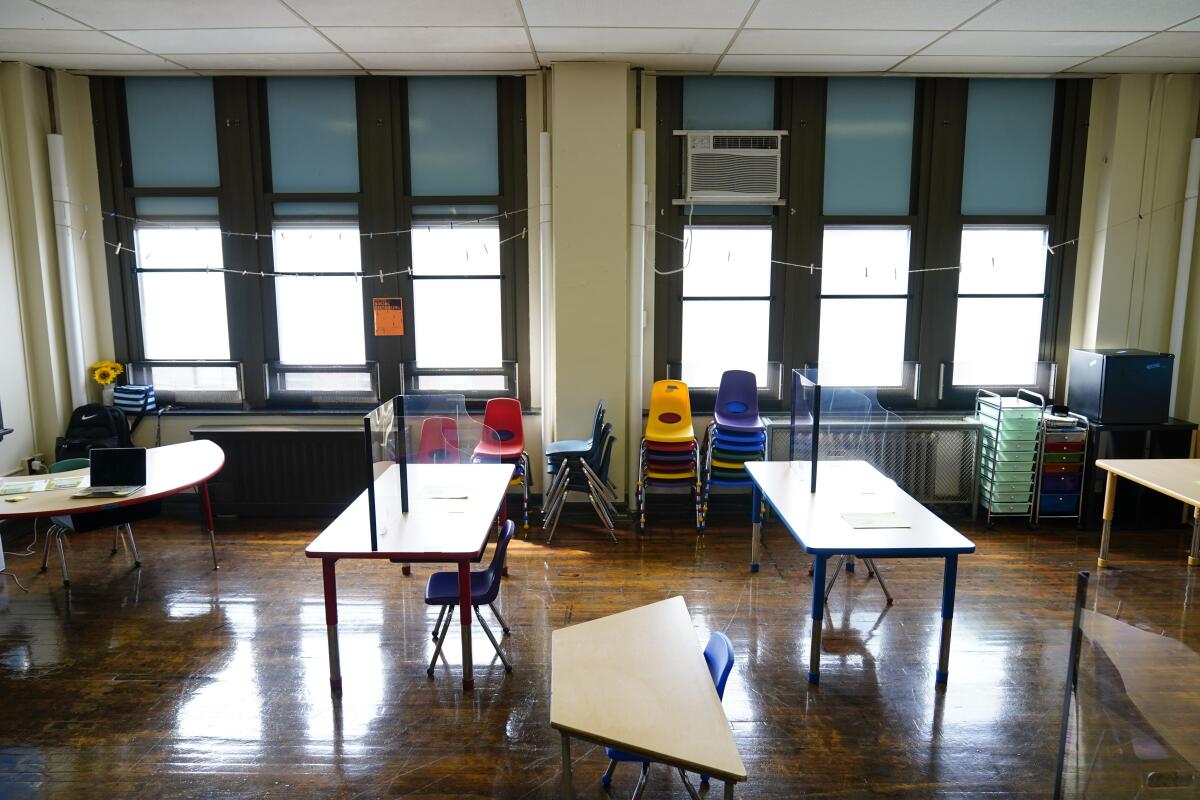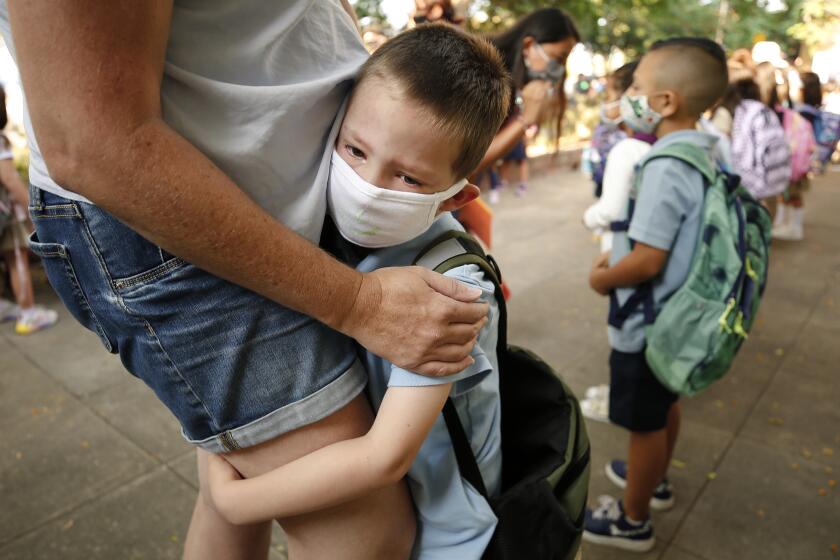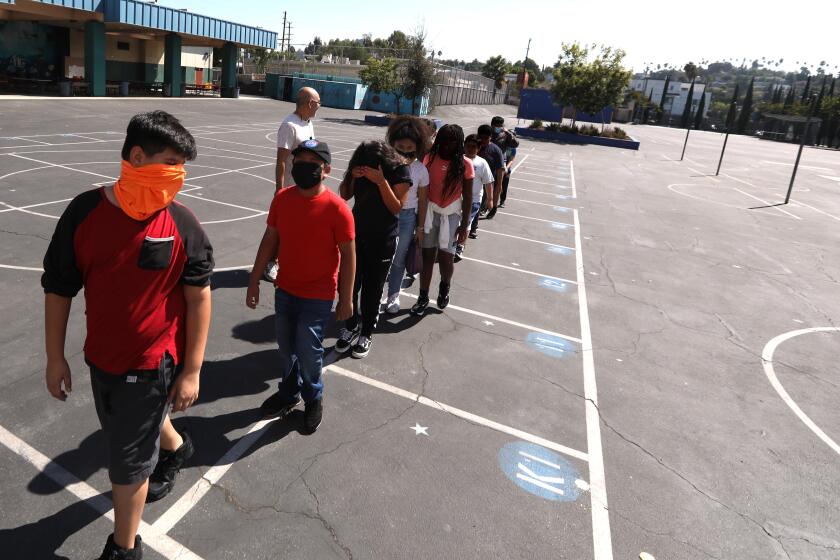Reading and math scores nationwide fell sharply during pandemic, data show

WASHINGTON â Math and reading scores for Americaâs 9-year-olds fell dramatically during the first two years of the pandemic, according to a new federal study â offering an early glimpse of the magnitude of the learning setbacks dealt to the nationâs children.
Reading scores saw their largest decrease in 30 years, while math scores had their first decrease in the history of the testing regimen behind the study, according to the National Center for Education Statistics, a branch of the U.S. Education Department.
The declines hit all regions of the country and affected students of most races. But students of color saw some of the steepest decreases, widening the racial achievement gap.
Much of the nationâs standardized testing didnât happen during the early days of the pandemic, so the findings released Thursday give an early look at the effect of pandemic learning disruptions. Broader data are expected to be released later this year as part of the National Assessment of Educational Progress, also known as the Nationâs Report Card.
âThese are some of the largest declines we have observed in a single assessment cycle in 50 years of the NAEP program,â said Daniel McGrath, the acting associate commissioner of the NCES. âStudents in 2022 are performing at a level last seen two decades ago.â
The study reflects two years of upheaval in American education as schools shut down for months at a time amid COVID-19 outbreaks. Many students spent a year or more learning from home, and coronavirus outbreaks among staff and students continued the disruption even after kids returned to the classroom.
A bill approved by the state Senate would require children to complete kindergarten before entering first grade, beginning in the 2024-25 school year.
In math, the average score for 9-year-old students fell 7 percentage points between 2020 and 2022, according to the study. The average reading score fell 5 points.
The pandemicâs upheaval especially hurt students of color. Math scores dropped by 5 percentage points for white students, compared with 13 points for Black students and 8 points for Latino students. The divide between Black and white students widened by 8 percentage points during the pandemic.
Decreases were more uniform in reading: Scores dropped 6 points for white, Black and Latino students.
For Asian American students, Native American students and students of two or more races, there was little change in reading or math between 2020 and 2022, the study found.
There are 150 L.A. Unified schools in âvery high needâ of green space and shade, mostly in South and East Los Angeles, where parks are scarce.
Geographically, all regions saw decreases in math, but declines were slightly worse in the Northeast and Midwest compared with the West and South. Outcomes were similar for reading, except that the West had no measurable difference compared with 2020.
Although it marks a sharp drop since 2020, the average reading score was 7 points higher than it was in 1971, and the average math score was 15 points higher than in 1978, the study found.
Overall, the results paint a âsobering pictureâ of schooling during the pandemic, said Peggy Carr, commissioner of the NCES.
Federal officials say this is the first nationally representative study to compare student achievement before the pandemic and in 2022, when most students had returned to in-person learning. Testing was completed in early 2020, soon before the World Health Organization declared a pandemic, and in early 2022.
More to Read
Sign up for Essential California
The most important California stories and recommendations in your inbox every morning.
You may occasionally receive promotional content from the Los Angeles Times.












